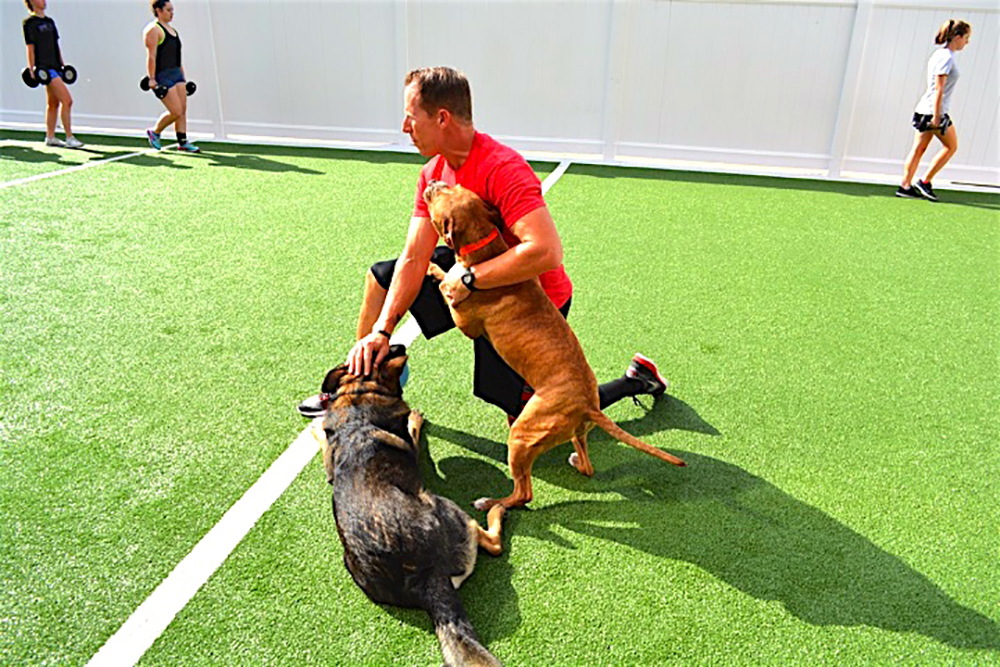Fitness Wisdom from Ben Affleck’s Trainer, Walter Norton Jr.

Walter Norton Jr./photo provided
Walter Norton Jr. has gotten a lot of press for his role in making Ben Affleck the “biggest, buffest Batman ever,” as the Boston Globe put it. Yes, Norton did put Affleck through 500 grueling workouts, helping him squat and lift his way to superhero-level fitness for Batman v Superman: Dawn of Justice—but his bread and butter is working with athletes and regular, non-movie star clients at his North Reading gym, the Institute of Performance & Fitness.
To that end, we caught up with Norton to find out what you’re doing wrong at the gym, and how you can do it better. Who knows? Maybe you’ll even end up looking like Affleck.
1. Not having a plan.
“The one I see the most is also probably the biggest problem: People don’t have a plan,” Norton says. “It’s like you’re putting a jigsaw puzzle together and you don’t even want to do the border first.”
Solution: Don’t focus on vague results like, “Go to the gym more” or, “Get healthy.” Instead, Norton says, you should focus on your “why”—the reason you want to get fit—and build specific goals from there. That starts, he says, with deciding on a specific schedule. “Get to the gym, first and foremost,” he says. “Outline when you’re going to get to the gym every week and get to the gym so you’re on a schedule.”
2. Going it alone.
Getting fit is a long process, Norton says. To make it work, it’s crucial to have a support network.
Solution: First, if you can afford it, hire a coach or look into group training sessions. “If I’m going to learn Spanish, okay, I’m going to get a tutor,” Norton says. “I want to get better at woodworking, okay, I’m going to work with someone. I’m not going to try to do this stuff alone, especially in the beginning.”
Norton says working with a coach will help you get the fundamentals down, and begin to fine-tune your plan. After that, making workouts social may keep you moving forward. “Create a team, if you can—a friend or a relative that you can work out with regularly,” he suggests. “Create accountability.”
3. Growing stagnant.
Making your plan is good; updating it over time is even better. “People tend to stay on the same plan for way too long,” Norton says. “You’ve got to continually reevaluate.”
Solution: Be honest with yourself, or find a coach who will keep you honest. Then, keep making your plan more difficult as you progress. “If I’m improving 1 percent every week, I’m on a pretty good path,” Norton says.
4. Burning out early.
“Health is measured in years,” Norton says. “It’s not measured in days and weeks.” In other words, working out for a week isn’t going to cut it—it’s about consistency.
Solution: Build a schedule you know you can stick to, and follow it until fitness becomes a habit. “If you stick to a schedule for three weeks, whether the workouts are terrific some days or average other days, [that’s a good start],” Norton says. “You’re trying to build on success.”
5. Holding onto preconceived notions.
“[People] get really rigidly attached to one concept,” Norton says. “Or they’ve been told something so many times that it’s become almost part of their DNA, that’s what they’re attaching their success to. That can be pretty dangerous.”
Solution: Keep your mind open. Don’t eat Paleo just because you’ve been told to, and don’t do yoga just because you think you should. Listen to your body, and do what works for you. “I don’t have the same concepts in fitness I had 20 years ago,” Norton says. Try new things, he suggests, until you find success.


